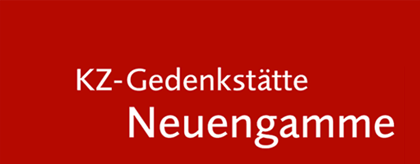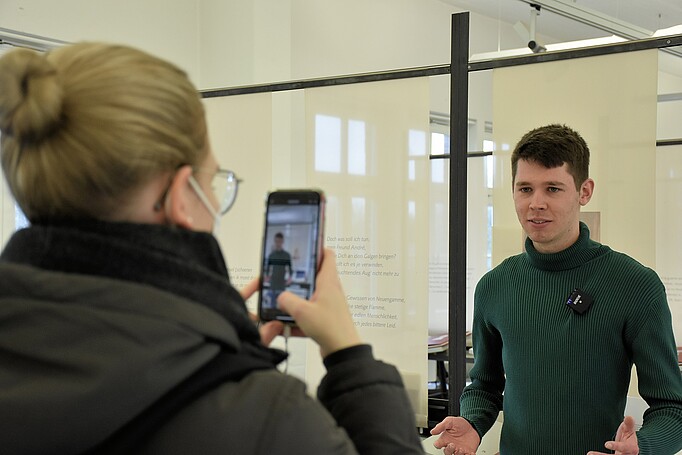01/28/2022 News
The Neuengamme Concentration Camp Memorial is part of the “TikTok – Shoah Education and Commemoration Initiative”
On the occasion of the Day of Remembrance for the Victims of National Socialism (27th January), memorial sites and museums in Germany and Austria launched their activities on the TikTok platform.
Within the context of a series of seminars consisting of several parts, the “TikTok – Shoah Education and Commemoration Initiative” pursued the goal of encouraging memorial sites and museums to intergrate TikTok into their own commemoration and education work and to provide them with the knowledge in order to reach new target groups. Against the background of the widespread problem of Shoah relativisation and denial, both off and online, not least in the context of the Corona pandemic, the initiative is simultaneously directed against the dissemination of such content on TikTok. The project was accompanied by a quantitative and qualitative study by the Hebrew University of Jerusalem on the content of Shoah commemoration and remembrance work on TikTok (Press release of the initiative).
TikTok is a recent medium that reaches a very young target group that reaches a very young target group, namely those between the ages of 16 and 24. Users already actively deal with the topic of the Shoah or National Socialism on this platform. But until now, there has been a lack of content that memorial themselves have made.
The Neuengamme Concentration Camp Memorial (link to TikTok account) has been active on TikTok since the end of November 2021 and within the first two months has been able to register 10,000 followers, 90,000 likes and 1 million views. This means that the content has received more attention than the presence of the memorial on any other online platform, and all this within a very short space of time. The interest is not surprising, as young people are once again more interested in the National Socialist era. According to a new study commissioned by the Arolsen Archives, three quarters of the 19 to 25 year-olds surveyed expressed an interested in this period. This is in comparison to only 66% of their parents’ generation. Young people not only associate dealing with National Socialism with coming to terms with the past, but also seek a better understanding of their own time and world. They also connect dealing with the past to acute social problems such as racism and discrimination.
The short clips on the Neuengamme Concentration Memorial TikTok account are told from the perspective of three young people from Great Britain, Australia and Ukraine who work as volunteers at the memorial. They give background information about the places, biographies and exhibits. One of the memorial’s TikTok videos, explaining the markings on the prisoners’ uniforms was viewed by over 400,000 TikTok users. What was surprising for the memorial was the high rate of interaction with the videos, in the form of comments or other contributions. The challenge of being active on this medium is to find an appropriate form of communication while using the visual and narrative language of TikTok which is short and concise and uses different narrative layers (writing, image, moving image, music, titles). In the time around 27th January (Day of Remembrance for the Victims of National Socialism), we uploaded “user-generated content” to the account. This content involved short videos sent to us by members of the 3rd and 4th generations, in cooperation with the Young Committee of the Amicale Internationale KZ Neuengamme.
Dr. Oliver von Wrochem, Director of the Neuengamme Concentration Camp Memorial states that: “The Neuengamme Concentration Camp Memorial has been active in online communication for many years. Our goal with the new TikTok project is to educate people about National Socialist crimes using a medium that young people use regularly, to raise awareness of past and present injustice and to increase the visibility of our topics by passing on information in a modern way. In doing so, we provide a framework for reflection and open ourselves to a new platform of connected, active learners.”




